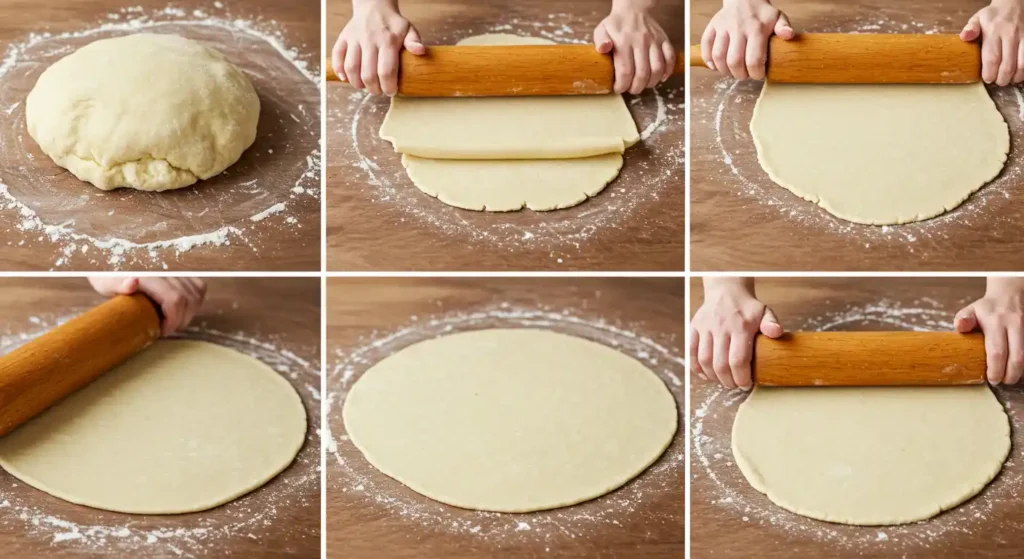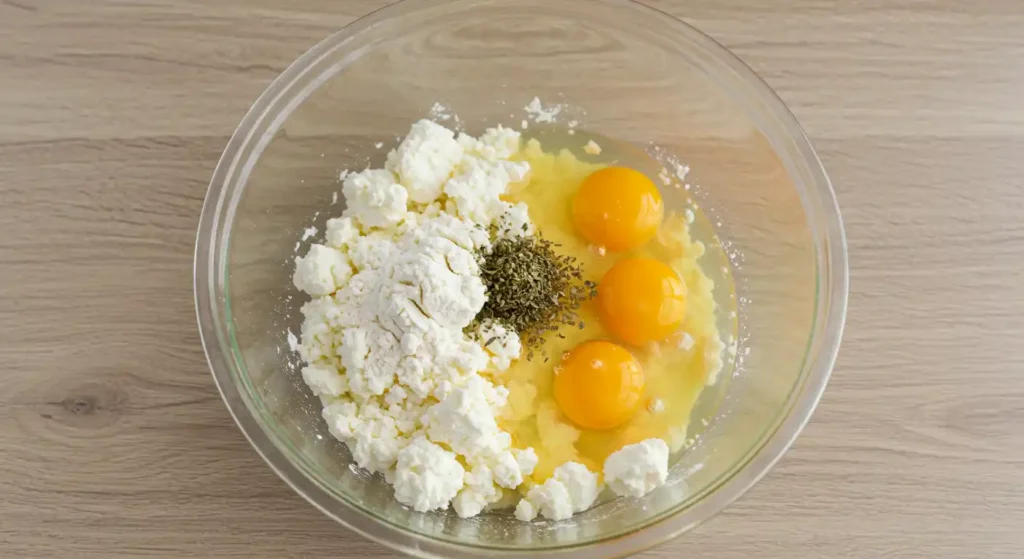Cottage cheese flatbread is a delightful and nutritious option for those looking to enjoy a versatile and healthy meal. However, one common challenge many face is keeping this delicious flatbread from sticking during preparation and cooking. In this article, we’ll explore various techniques and tips to ensure your cottage cheese flatbread turns out perfectly every time. From understanding the factors that contribute to sticking to effective preparation and cooking methods, we’ve got you covered. So, let’s dive into the world of cottage cheese flatbread and discover how to keep it from sticking!
Understanding Cottage Cheese Flatbread
What is Cottage Cheese Flatbread?
Cottage cheese flatbread is a simple yet versatile recipe that combines cottage cheese with flour and other ingredients to create a soft, pliable dough. This flatbread can be made with various types of flour, including whole wheat, all-purpose, or gluten-free options, making it suitable for different dietary preferences. The addition of cottage cheese not only enhances the flavor but also contributes to a moist texture, making it a delightful alternative to traditional flatbreads.
Nutritional Benefits of Cottage Cheese Flatbread
One of the standout features of cottage cheese flatbread is its nutritional profile. Cottage cheese is packed with protein, calcium, and essential vitamins, making it a healthy choice for those looking to boost their nutrient intake. When you incorporate it into flatbread, you’re not just enjoying a tasty treat; you’re also fueling your body with wholesome ingredients. Plus, depending on the flour you choose, you can increase the fiber content, making it even more beneficial for your digestive health.
Common Uses and Variations
Cottage cheese flatbread is incredibly versatile and can be used in various ways. You can enjoy it as a wrap for your favorite fillings, serve it alongside soups and salads, or even use it as a base for pizzas and other toppings. The beauty of this flatbread lies in its adaptability; you can experiment with different herbs, spices, and additional ingredients to create unique flavors. For instance, adding garlic powder or herbs like oregano can elevate the taste, while incorporating seeds can add a delightful crunch.
Factors Contributing to Sticking
1. Moisture Content
One of the primary reasons cottage cheese flatbread tends to stick is the moisture content in the dough. Cottage cheese, while delicious, can vary in moisture levels depending on the brand and type you use. If your dough is too wet, it will cling to surfaces and become difficult to handle. To combat this, consider draining excess liquid from the cottage cheese before mixing it into your dough. Additionally, you can adjust the amount of flour you use to achieve the right consistency aim for a dough that is soft but not overly sticky.
2. Type of Flour Used
The type of flour you choose can significantly impact the stickiness of your flatbread. Some flours, like all-purpose flour, have a higher gluten content, which can create a more elastic dough that’s easier to work with. On the other hand, whole wheat flour or gluten-free alternatives may require different handling techniques. If you’re using whole wheat flour, for instance, you might need to add a bit more liquid or adjust the kneading time to ensure the dough doesn’t become too dry or crumbly. Experimenting with different flours can help you find the perfect balance for your cottage cheese flatbread.
3. Cooking Surface and Equipment
The cooking surface you use plays a crucial role in preventing sticking. Non-stick pans or griddles are often recommended for cooking flatbreads, as they provide a smooth surface that minimizes adhesion. If you’re using cast iron or stainless steel, make sure to preheat the surface adequately and use a light coating of oil or butter to create a barrier between the dough and the pan. Additionally, using parchment paper can be a game-changer; simply place the flatbread on the paper before cooking, and you’ll find it much easier to flip and remove without sticking.
4. Temperature Control
Temperature control is another vital factor in keeping your cottage cheese flatbread from sticking. If the cooking surface is too hot, the outside of the flatbread may cook too quickly, leading to a sticky interior. Conversely, if the surface is not hot enough, the flatbread may absorb too much moisture and stick. To achieve the perfect cooking temperature, preheat your pan over medium heat and adjust as necessary. A good rule of thumb is to test a small piece of dough first; if it sizzles and cooks evenly, you’re ready to go!
By understanding these factors contributing to sticking, you can take proactive steps to ensure your cottage cheese flatbread turns out perfectly every time. Now that we’ve covered the basics, let’s move on to effective preparation techniques that will help you avoid sticking altogether!
Preparation Techniques Preventing sticking in flatbread

1 Choosing the Right Ingredients
1.1 Selecting the Best Cottage Cheese
When it comes to making cottage cheese flatbread, the type of cottage cheese you choose can make a significant difference. Opt for a brand that has a good balance of creaminess and moisture. Low-fat or non-fat cottage cheese can work, but they may lead to a drier dough. If possible, go for small-curd cottage cheese, as it tends to blend more smoothly into the dough, reducing the chances of excess moisture that can cause sticking.
1.2 Flour Options for Flatbread
As mentioned earlier, the type of flour you use is crucial. All-purpose flour is a popular choice for its versatility, but you can also experiment with whole wheat flour for added nutrition. If you’re looking for gluten-free options, almond flour or chickpea flour can be great alternatives. Just remember that different flours absorb moisture differently, so you may need to adjust the liquid content in your recipe accordingly.
2. Proper Mixing and Kneading
Mixing and kneading your dough properly is essential for achieving the right texture. Start by combining your cottage cheese and flour in a bowl, mixing until they form a cohesive dough. Avoid overmixing, as this can lead to a tough texture. Once combined, knead the dough gently on a floured surface for about 2-3 minutes. This helps develop the gluten, which can improve the dough’s elasticity and reduce stickiness.
3. Resting the Dough
Resting your dough is a crucial step that many people overlook. After kneading, let the dough rest for at least 15-30 minutes. This allows the gluten to relax, making it easier to roll out without sticking. Cover the dough with a damp cloth or plastic wrap to prevent it from drying out during this resting period. Trust us; this simple step can make a world of difference!
4. Rolling Techniques
When it’s time to roll out your dough, use a well-floured surface and a rolling pin. Dust both the surface and the rolling pin with flour to prevent sticking. Roll the dough gently, applying even pressure to achieve a uniform thickness. If you notice the dough sticking, sprinkle a little more flour as needed. Alternatively, you can place the dough between two sheets of parchment paper to roll it out, which can help eliminate sticking altogether.
5. Using Non-Stick Surfaces
Using non-stick surfaces is a game-changer when it comes to preventing sticking. If you’re cooking on a skillet or griddle, make sure it’s well-seasoned or coated with a thin layer of oil. For added assurance, consider using parchment paper or silicone baking mats. These surfaces create a barrier between the dough and the cooking surface, making it much easier to flip and remove your flatbread without any hassle.
Cooking Methods preventing sticking in flatbread

1. Preheating Cooking Surfaces
One of the most critical steps in cooking cottage cheese flatbread is preheating your cooking surface. Whether you’re using a skillet, griddle, or even an oven, make sure it’s hot before adding your dough. A properly preheated surface helps create a nice sear on the outside of the flatbread, which can prevent sticking. Aim for medium heat; if it’s too hot, the outside may cook too quickly, while the inside remains undercooked. A good test is to sprinkle a few drops of water on the surface if they sizzle and evaporate quickly, you’re ready to go!
2. Using the Right Amount of Oil or Butter
Using the right amount of oil or butter is essential for preventing sticking. A light coating is usually sufficient; you don’t want to drown your flatbread in grease. For a healthier option, consider using olive oil or avocado oil, which can add flavor without overwhelming the dish. If you’re using butter, let it melt and slightly brown before adding the flatbread. This not only adds flavor but also creates a non-stick barrier that helps keep your flatbread from adhering to the cooking surface.
3. Cooking on Different Surfaces
The type of cooking surface you choose can significantly impact the stickiness of your flatbread. Non-stick pans are ideal, but if you prefer cast iron or stainless steel, make sure they’re well-seasoned. Cast iron skillets can provide a beautiful crust, but they require proper care to maintain their non-stick properties. If you’re using a baking sheet in the oven, line it with parchment paper to ensure easy removal. Experimenting with different surfaces can help you find what works best for your cooking style.
4. Monitoring Cooking Time and Temperature
Keeping an eye on cooking time and temperature is crucial for achieving the perfect flatbread. Generally, cottage cheese flatbread cooks quickly usually within 2-3 minutes per side. If you notice that the edges are browning too fast, lower the heat slightly. Conversely, if the flatbread is taking too long to cook, increase the heat. The goal is to achieve a golden-brown exterior while ensuring the inside is cooked through. Don’t be afraid to flip the flatbread early if you see it starting to stick; it’s better to check than to risk a stuck mess!
5. Flipping Techniques
Flipping your flatbread can be a delicate task, especially if you’re worried about sticking. To make this easier, use a wide spatula that can support the entire flatbread. Gently slide the spatula under the flatbread, ensuring it’s fully lifted before flipping. If you’re using parchment paper, you can also lift the paper to help flip the flatbread without direct contact with the cooking surface. This technique minimizes the risk of sticking and helps maintain the integrity of your flatbread.
Storage and Reheating Tips Preventing sticking in flatbread
1. Proper Storage Techniques
To keep your cottage cheese flatbread fresh and prevent it from sticking together, proper storage is key. Once your flatbread has cooled completely, stack them with a piece of parchment paper or wax paper between each flatbread. This will help absorb any excess moisture and prevent them from sticking to one another. Place the stacked flatbreads in an airtight container or wrap them tightly in plastic wrap. If you plan to consume them within a few days, storing them in the refrigerator is fine. For longer storage, consider freezing them.
2. Reheating Without Sticking
When it comes to reheating your cottage cheese flatbread, you want to ensure it stays soft and doesn’t stick to the cooking surface. The best method is to use a skillet over low to medium heat. Lightly grease the skillet with a small amount of oil or butter to create a non-stick barrier. Place the flatbread in the skillet and cover it with a lid for a minute or two. This helps retain moisture while warming it up. Alternatively, you can reheat them in the oven at a low temperature (around 300°F or 150°C) for about 10 minutes, placing them directly on the oven rack or on a baking sheet lined with parchment paper.
3. Freezing Cottage Cheese Flatbread
If you’ve made a large batch of cottage cheese flatbread and want to save some for later, freezing is a great option. To freeze, follow the same stacking method mentioned earlier, using parchment paper between each flatbread. Once stacked, place them in a freezer-safe bag or container, removing as much air as possible to prevent freezer burn. Cottage cheese flatbread can be frozen for up to three months. When you’re ready to enjoy them, simply thaw them in the refrigerator overnight and reheat as described above.
Troubleshooting Common Issues preventing sticking in flatbread

1. What to Do If Flatbread Sticks
If you find yourself in the unfortunate situation where your cottage cheese flatbread sticks to the cooking surface, don’t panic! First, try to gently loosen the edges with a spatula. If it’s still stuck, you can carefully add a few drops of water around the edges to create steam, which may help release it. If all else fails, you can always salvage the flatbread by cutting it into pieces and serving it as a flatbread crumble or topping for salads and soups. Remember, even the best cooks encounter sticking issues from time to time!
2. Adjusting Recipes for Better Results
Sometimes, sticking can be a sign that your recipe needs a little tweaking. If you consistently find your flatbread sticking, consider adjusting the moisture content. You might need to reduce the amount of cottage cheese or increase the flour slightly. Additionally, if you’re using a different type of flour, be aware that it may absorb moisture differently. Keep notes on your adjustments so you can replicate successful batches in the future.
3. Tips for Future Batches
To ensure that your future batches of cottage cheese flatbread turn out perfectly, keep these tips in mind:
- Experiment with Ratios: Don’t hesitate to play around with the ratios of cottage cheese to flour. Finding the right balance can make a significant difference in texture and stickiness.
- Use Fresh Ingredients: Always use fresh cottage cheese and flour. Stale ingredients can affect the dough’s consistency and lead to sticking.
- Practice Makes Perfect: Like any cooking skill, making cottage cheese flatbread takes practice. Don’t be discouraged by initial failures; learn from them and keep trying!
FAQs
1. Can I use other types of cheese for flatbread?
Absolutely! While cottage cheese is a fantastic choice for its moisture and protein content, you can experiment with other cheeses as well. Ricotta cheese, for instance, can provide a similar texture and flavor. If you’re looking for a stronger taste, consider using feta or goat cheese. Just keep in mind that different cheeses may alter the moisture content, so you might need to adjust the flour accordingly to prevent sticking.
2. What is the best flour for cottage cheese flatbread?
The best flour for cottage cheese flatbread largely depends on your dietary preferences and desired texture. All-purpose flour is a popular choice for its versatility and ease of use. Whole wheat flour adds more fiber and nutrients, while gluten-free options like almond flour or chickpea flour can cater to those with gluten sensitivities. Each type of flour will yield slightly different results, so feel free to experiment to find your favorite!
3. How do I know when the flatbread is done cooking?
Knowing when your cottage cheese flatbread is done cooking is key to achieving the perfect texture. Look for a golden-brown color on both sides, and the edges should appear slightly crisp. You can also gently press the center with a spatula; if it springs back, it’s likely done. If you’re unsure, it’s always better to check a small piece first to avoid overcooking.
4. Can I make cottage cheese flatbread ahead of time?
Yes, you can definitely make cottage cheese flatbread ahead of time! Prepare the dough and cook the flatbreads, then store them in an airtight container in the refrigerator for up to three days. If you want to keep them longer, consider freezing them as mentioned earlier. When you’re ready to enjoy them, simply reheat as needed.
5. How can I add flavor to my cottage cheese flatbread?
Adding flavor to your cottage cheese flatbread is easy! You can mix in herbs and spices directly into the dough, such as garlic powder, onion powder, or dried herbs like oregano or basil. For a touch of sweetness, consider adding a bit of honey or cinnamon. You can also top the flatbread with your favorite spreads, dips, or toppings after cooking to enhance the flavor even further.
Conclusion
Cottage cheese flatbread is not only a delicious and nutritious option but also a versatile addition to your culinary repertoire. By understanding the factors that contribute to sticking and implementing effective preparation and cooking techniques, you can ensure that your flatbread turns out perfectly every time. From selecting the right ingredients to mastering the cooking methods, each step plays a crucial role in achieving that ideal texture and flavor.
Remember, practice makes perfect! Don’t be discouraged by initial challenges; instead, view them as opportunities to learn and improve. With the tips and tricks shared in this article, you’re now equipped to create mouthwatering cottage cheese flatbread that won’t stick, whether you’re enjoying it as a wrap, a side dish, or a base for your favorite toppings.
So, roll up your sleeves, gather your ingredients, and get ready to impress your taste buds and those of your loved ones with your newfound skills in making cottage cheese flatbread. Happy cooking, and enjoy every delicious bite!
